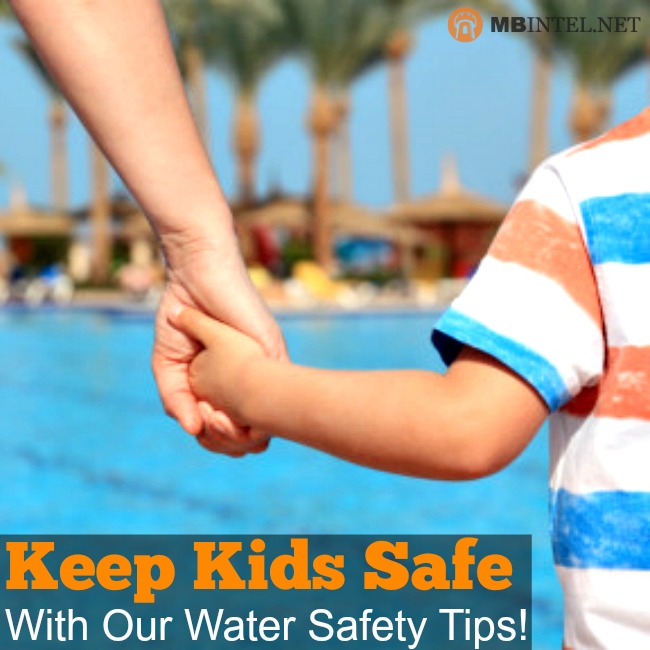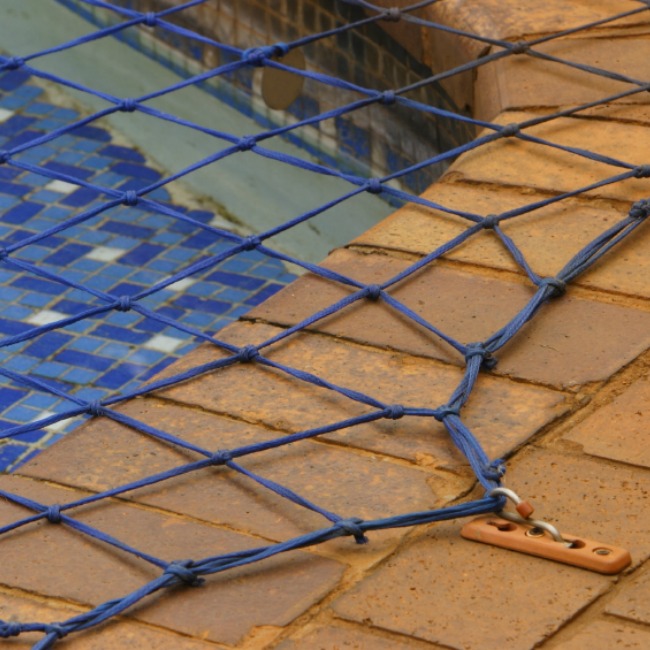If you have small children, you know how important it is to keep kids safe around water, but it’s easy for anyone to find themselves faced with a close call when it comes to pool safety. I’m a firefighter, an expert in pool safety and drowning emergencies, and it happened to me. You would’ve thought if anyone could keep kids safe in the water, it would be me.
My family was having a party in our backyard, with about forty guests and lots of small children. Everyone was swimming or enjoying themselves and I was watching the pool, making sure the kids were OK. Suddenly, one of the children climbed out of the pool and started being sick. I went over to help and as I was nursing the boy, distracted from the rest of the group, my wife came back outside with snacks, asking where our three year old was.
To our horror, we looked at the pool and found him floating face down, not breathing. I still remember my sons limp, pale, lifeless body being handed to me and starting CPR on him. My son is fine, but I hope telling you this story helps you see that it can happen to anyone. Things could’ve been so much worse. We have lots of precautions in place to prevent drowning, we’re pretty tight on security round this house, fences, locked gates, training, you name it. This happened while I was watching the pool, which makes the story so much more scary!

Just because you don’t have a pool doesn’t mean you don’t have to worry about drowning. Bath tubs, toilets, buckets, and other bodies of water like lakes, rivers and streams are just as dangerous. According to the US Center for Disease Control and Prevention (CDC), over 700 children under the age of 14 killed each year through drowning incidents in the United States and five times this number, over 3500 children, are admitted to hospitals each year with non-fatal, but sometimes permanent, near drowning injuries.
Drowning remains the second leading cause of death for all children between the ages of 1-14, second only to motor vehicle accidents. Children between the ages of 1 and 4 are the most at risk and the majority of these incidents happen in home swimming pools.
The ABC’s of Pool Safety:
We recommend the ABC’s of pool safety!
- Adult Supervision
- Barriers
- Classes

Adult Supervision at the Pool
Nothing can substitute for Adult Supervision. It’s so important that an adult who’s a strong swimmer is watching whenever children are near or in a body of water and pays attention at all times. Forget about computers, cell phones and books, even lounging around can be distracting if you fall asleep accidentally or don’t have a good view of the area.
When there’s more than a few children in the pool, you should ask someone else to sit and watch them with you. Like my story showed, you can easily get distracted and that’s when accidents happen. Children drown completely silently in minutes. Once they’re underwater, there’s no way to know they’re drowning unless you can actually see them.
Should I Have a Barrier?
The second thing you need around a body of water is a barrier:
There are many types of barriers, for many situations – the more you have, the better. All pools should be surrounded by an unclimbable fence at least 4’ high with self-closing and locking gates. This fence is in addition to any fence that may already be surrounding your yard, and is specifically designed to separate the pool area on all sides. Just because you don’t have children, doesn’t mean that a child can’t find its way into your pool – all swimming pools should have separate pool fences.
Studies have shown that fully enclosed four sided pool fences reduces a child’s risk of drowning by 83% over a standard three-sided property fence (CDC). Various types of nets that can be placed over pools are also available, but these should be used with a fence whenever possible.
There are also motion alarms that can be installed on pools to alert if there is movement in the pool, and similar alarms can be installed on home doors that lead out to the pool area as well.
For bath tubs and toilets, doors should be closed and there are locks that can be placed on toilets.
Do I Need to Take CPR Classes?
At a minimum, adults and teenagers should take CPR classes, especially if they will be responsible for watching children in a pool. Obviously, CPR classes teach many more skills than just response to drowning and can benefit the home in many ways. Children and adults who are not proficient at swimming should be enrolled in swimming classes as soon as possible. Other classes that are beneficial are life guard classes.
Summary
- Be careful not to be lulled into a sense of security because all members of your home can swim! Accidents happen. In the above scenario, the three year old was a proficient swimmer. Due to the number of people in the pool, the waves overcame his swimming ability.
- Since this incident I’ve heard it said, “It’s a good thing you were there, since you’re a firefighter”, but anyone could’ve done what I did. I didn’t have any special equipment or my normal crew to help me. I simply started one rescuer CPR immediately and initiated 911. These are all actions anyone can do.
- Pools and bodies of water can provide great family fun, but need to be treated with caution and respect. Remember the ABC’s of water safety: Adult Supervision, Barriers, and Classes.
